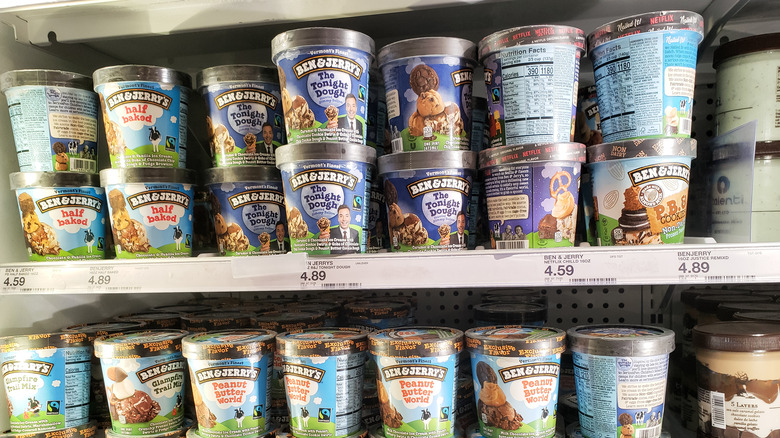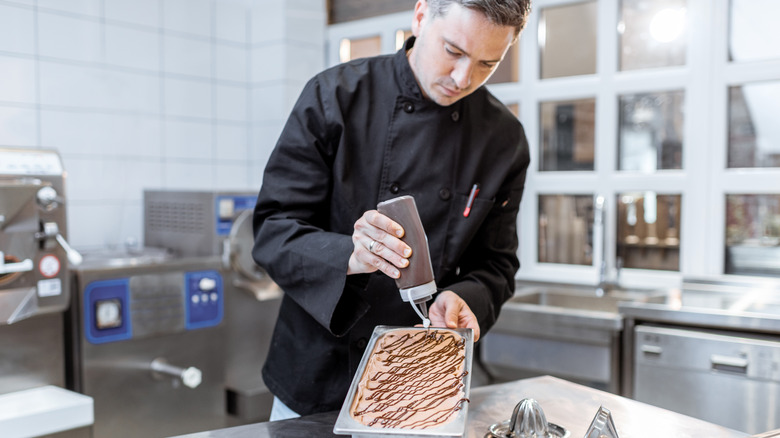Why Ben & Jerry's Doesn't Always Use The Same Base For Its Ice Creams
When it comes to crafting delectable ice cream, it's safe to say Ben & Jerry's knows a thing or two. Created by Ben Cohen and Jerry Greenfield, childhood friends from Brooklyn, New York, the now-thriving dessert company was born out of a college town shop in Vermont in 1978, according to Live About. So how did they get to make the 120,000 pints a day that Serious Eats reports they now produce? Eventually, the founders enlisted a little help, and today the responsibility of coming up with successful new flavors lies in the hands of the elite nine-person team called the Flavor Gurus (via Ben & Jerry's).
Unsurprisingly, this squad is made up of experts in their craft. For example, Craig Koskiniemi, also known as the "Arctic Alchemist," holds a bachelor's and a master's in food science, according to his Ben & Jerry's profile. While coming up with new ice cream flavors may sound easy enough, there is actually a lot of food chemistry required to produce a delicious taste, with just the right texture. And getting both right is important — your favorite Ben & Jerry's flavor would be a lot less appealing if you chipped a tooth trying to bite into it. To ensure a creamy consistency at all times, the Flavor Gurus sometimes need to adjust their formula (via Mental Floss).
Added ingredients can change the consistency
Most Ben & Jerry's ice creams start with the same blend of ingredients, which includes milk, cream, egg yolks, water, and liquid sugar, according to Mental Floss. But for some flavors, the Gurus have to adjust the base so the pint will retain the same consistency. Adding ingredients with more fat means a lower fat base is needed, and extra sugary ingredients require less sugar in the base. Flavorings can be a crucial factor that impacts texture, as per Ice Cream Nation, adding too many solid ingredients can create a grainy feeling, while too little can lead to iciness.
And of course, it's important to make sure the ice cream is actually edible. As Flavor Guru Kirsten Schimoler told Mental Floss, "If you're at too high a fat level, once you freeze it, you're going to end up with concrete; it's not going to come out of the machine." The fat in ice cream is made from pre-homogenized milk, although the amount varies by type — regular ice cream must be at least 10% fat, with premium ice cream containing up to 20% fat (per American Chemical Society). Adding a fattier ingredient, like peanut butter, can throw off this ratio, meaning the whole formula may need to be adjusted.
So the next time you dig your spoon into a fresh pint of Ben & Jerry's, don't forget to appreciate the complex scientific equations that went into crafting your favorite flavor.

